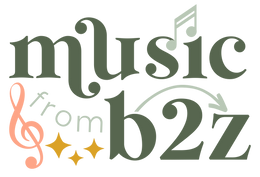
Let’s talk about a little magic trick—one that helps your students stay focused, helps you stay organized, and just so happens to impress your admin every time they walk in.
✨ Enter: the music focus wall ✨
When done right, your focus wall becomes the place where students can see exactly what they’re learning, and where you can prove you're hitting the national music standards—without having to explain it 47 times.
It doesn’t need to be complicated or take hours to update. But it does need to work.
🎯 What to Put on Your Focus Wall
Your goal here isn’t just to fill space—it’s to clearly display your learning goals. And for that, music I Can statements are the MVP.
Here’s what to include:
✅ “I Can” Statements That Align With the Standards
Instead of posting the actual national music standards (which, let’s be real, are not exactly kid-friendly), use music I Can statements that translate the objectives into something students can actually understand. For example:
-
I can perform and evaluate musical ideas.
-
I can choose music for different types of performances.
-
I can relate music to my everyday life.
💡 Want these already written and ready to go? Grab this set here that aligns directly with the national standards—print, post, done.
✅ Current Concepts or Skills
Pair each I Can statement with a visual that supports the lesson—like rhythm values, solfege, or instrument visuals. If you’re using centers or composition activities, this helps students stay focused without asking you a million times what they’re supposed to be doing.
✅ Weekly Focus Display
Want a more flexible setup? I’ve got you.
The Week in Focus Posters let you plug in your goals and activities for the week and switch them out as needed—no full bulletin board makeover required. It’s the easy-to-update option that looks clean and still keeps admin happy.
🧠 Tips for Keeping It Updated (Without Making It a Chore)
If you’ve ever avoided your focus wall because updating it feels like one more thing on your never-ending to-do list… I get it. Here’s how to make it painless:
-
Keep a binder or folder of printed statements so you can just swap them out in seconds.
-
Use dry-erase sleeves or laminate the posters if you want to write them in weekly.
-
Make a quick routine: change them on Mondays or right after planning time.
Bonus? Students start paying attention when they see it change regularly—and they’ll start calling out when it doesn’t. (Ask me how I know 🫠)
💪🏼 Impressing Admin Without Even Trying
Let’s be real—when your principal walks in and sees national music standards visibly aligned with what students are doing? It’s a win. Add in kid-friendly phrasing like “I Can” statements, and it’s even better.
Your focus wall becomes a mini snapshot of your entire lesson plan, and it shows you’re teaching with intention—even when you’re in the middle of passing out egg shakers or redirecting someone out of your xylophone zone.

🗂️ Organizing Your Focus Wall for Multiple Grades
Teaching K–5 or on a rotating schedule? You can still make this work without dedicating a separate wall to every class.
Try this:
-
Use color-coded I Can statements for different grade levels.
-
Label pockets or clipboards for each grade and rotate them based on your daily schedule.
-
Stick with weekly objectives when you're teaching a skill across several grades (like rhythm composition or steady beat).
🎵 Wrap-Up: Functional, Focused, and Not Overwhelming
Your music focus wall doesn’t have to be flashy. It doesn’t need to change every week. It just needs to clearly show what students are working on—and make it easy for them (and your admin!) to follow along.
Set it up once. Use it all year. And finally, let your wall do some of the teaching.







